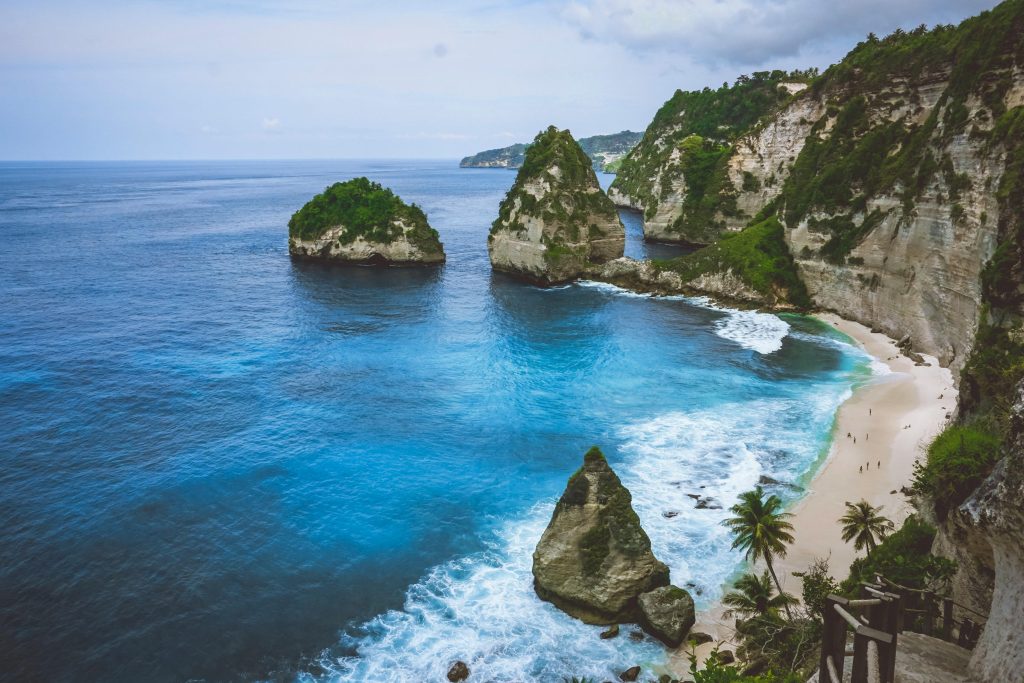I didn’t grow up dreaming about laying fiber-optic cables on the ocean floor.
In fact, like most people, I had no idea that the internet even relied on submarine cables. If you asked me back then how global data moved, I would have guessed satellites. It wasn’t until I landed my first job after college in 2012 that I discovered the real backbone of the internet—tens of thousands of kilometers of fiber-optic cables laid deep underwater, connecting continents, economies, and lives.
That was my first step into the fascinating and often overlooked world of submarine cable systems.
Diving into the Deep (with No Map)
 By way of background, I graduated with a degree in Electronics Engineering, but I had never heard of submarine cables. I was a fresh graduate trying to make my way in a country still catching up on digital infrastructure. In 2012, the Philippines had sluggish broadband, patchy mobile data, and countless underserved areas. The challenge was huge—but so was the opportunity.
By way of background, I graduated with a degree in Electronics Engineering, but I had never heard of submarine cables. I was a fresh graduate trying to make my way in a country still catching up on digital infrastructure. In 2012, the Philippines had sluggish broadband, patchy mobile data, and countless underserved areas. The challenge was huge—but so was the opportunity.
My early roles involved supporting subsea projects aimed at strengthening connectivity across the archipelago. I even spent over a month on a cable-laying vessel, working side-by-side with marine engineers and deck crews to ensure the cable was installed with precision along the seafloor. The work was physically and mentally demanding, but it was also incredibly rewarding.
Being out at sea taught me more than just how to deploy a cable. It taught me how to work across disciplines, manage complex logistics, and think three steps ahead in high-stakes environments. I saw firsthand how one well-executed project could transform digital access for thousands—if not millions—of people.
From Local to Global: Learning the Language of Infrastructure
Eventually, my work took me beyond Philippine waters. I spent years in Hong Kong and Singapore, working for an OTT (Over-the-Top) or CAP (Content Application Provider) that managed subsea cable systems connecting Asia, the U.S., and beyond. These weren’t just technical projects; they were geopolitical and commercial chess games involving permits, contracts, and partnerships across borders.
I negotiated with vendors, reviewed engineering designs, led stakeholder workshops, and helped navigate regulatory labyrinths in multiple jurisdictions. I needed to grow and adapt rapidly, as when I just learned the landscape, it would change and require new approaches and skills.
But as I advanced in the industry, I noticed something: it was obvious that many people did not look like me. The room was often full of older, white men—many brilliant and experienced—but the lack of diversity was undeniable. Even more importantly, it wasn’t only about ethnicity or nationality—there was also a lack of young people in the sector. An industry that powers the modern internet was, ironically, aging fast.
Why Young People Should Care About Subsea Cables
If you’re a young engineer, project manager, data analyst, or just someone curious about global tech infrastructure, this industry needs you.
Subsea cables are critical to cloud computing, fintech, AI, global trade, remote work—basically, everything that defines our lives today. Unlike big-name tech jobs, the subsea cable industry doesn’t advertise itself well. It’s low profile, highly specialized, and often operates behind the scenes. But that’s also why there’s so much room for young engineers to grow and make an impact.
And let’s be honest: the “cool factor” is very real. Want to work on a cable ship that literally lays the internet on the ocean floor? You can. Travel to remote islands that most people only see on postcards? Done that. Coordinate multi-million-dollar projects with global partners from a meeting room or—yes—sometimes from consortium meetings in Bali? That happens, too.

You’ll find yourself brainstorming network design with engineers from Tokyo, negotiating contract terms with lawyers from France, or resolving project delays with contractors in the U.S.—all in the same week. The subsea cable industry takes you out of the cubicle and into a world where cultures, time zones, and industries collide in the most exciting ways. You’re not only managing infrastructure, you’re navigating relationships, building consensus, and solving problems on a global scale.
What Subsea Taught Me About Running a Business
After over a decade abroad, I eventually returned home to the Philippines to take on a consultancy role. I also started something completely different: a frozen yogurt (froyo) business in my hometown.
It might sound counterintuitive, but I quickly realized how many of my subsea skills and experience applied directly to entrepreneurship. Here are a few examples.
- Project Management: Although on a much smaller scale, launching a store has similarities to launching a subsea cable system. You have to set a timeline, assign roles, manage suppliers, and work towards hitting crucial milestones. It’s not only about ticking boxes—every step mattered because one little delay could throw off the whole launch plan for my store.
- Contract Negotiation: Again, while the scale, complexity, and risk vary drastically between the subsea and froyo businesses, both require careful contract negotiations to protect interests and keep things running smoothly. In subsea work, contracts often need frequent amendments due to technical changes, unexpected challenges, or shifting project scopes. In my froyo business, I have to keep contracts flexible enough to accommodate growth—whether it’s upgrading machines or adjusting delivery volumes amid demand shifts. Clear contract terms up front have spared me a lot of headaches.
- Supply Chain Management: Whether managing cable and equipment spares or keeping ingredients fresh, it boils down to preparing and planning ahead so I have what I need when I need it, without overstocking and risking waste or extra costs. In both the subsea cable industry and my froyo business, I have to anticipate seasonal demand shifts, build strong relationships with suppliers I can trust, and keep a close eye on inventory records.
Even the soft skills I developed in my subsea work—diplomacy, communication, cultural sensitivity—have given me a leg up as an entrepreneur. In my froyo business, I realized I was still building community connections through dessert, even if it didn’t involve laying cables. And every time someone walks into my shop, I’m reminded of how infrastructure, whether digital or physical, can bring people together.
Exploring New Horizons Under the Sea
 This year marks my 13th year working in the subsea cable industry. I’m proud of the journey so far and grateful I decided to pursue this career path.
This year marks my 13th year working in the subsea cable industry. I’m proud of the journey so far and grateful I decided to pursue this career path.
If there is one piece of advice I’d like to share with aspiring subsea professionals, it’s this: you don’t need to be a genius or an insider to break into the subsea cable industry. What truly matters is curiosity, grit, and the willingness to learn quickly in unfamiliar environments.
Sure, the industry is full of veterans, but they won’t be around forever. And if we want the internet to keep running—and running well—we need young, diverse minds ready to take the baton.
So, if you’re looking for a career that’s global, meaningful, and just a little bit off the beaten path, consider looking under the sea (literally).
The internet doesn’t float on clouds. It runs on cables—and someone has to lay them.
Why not you?
For comments or questions, please contact us via [email protected].
